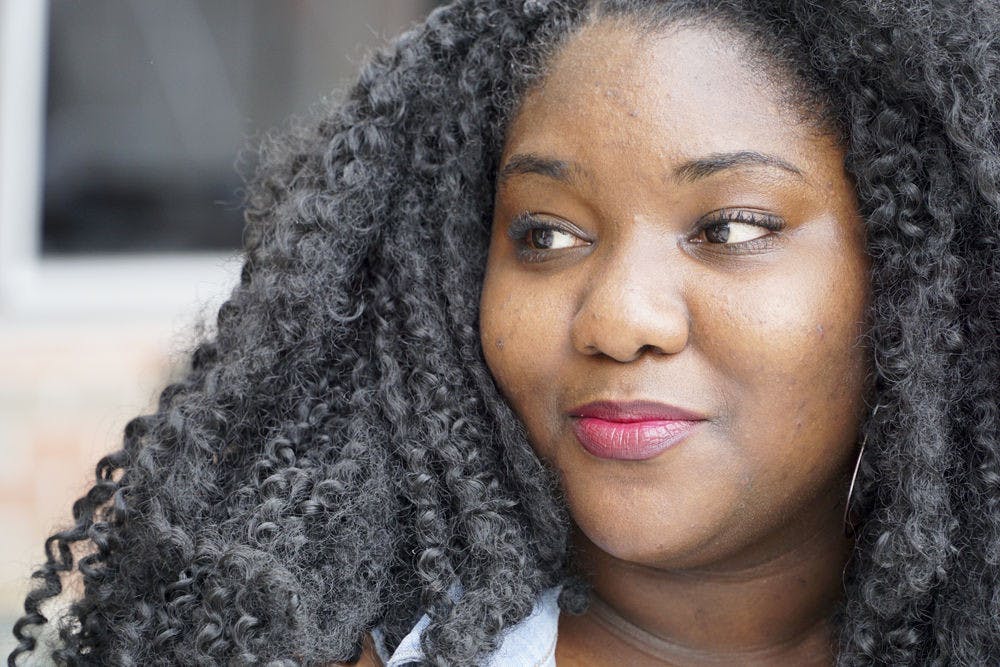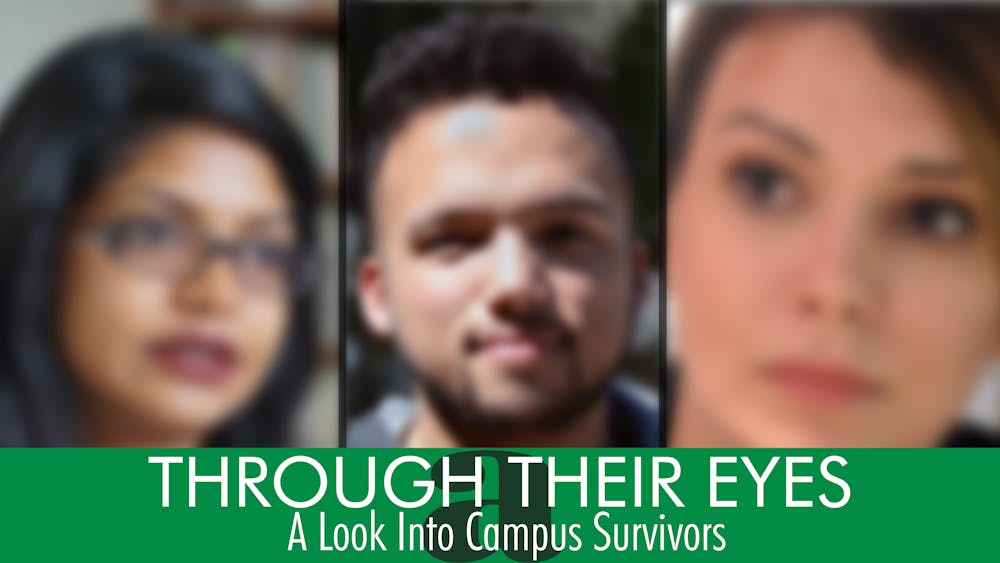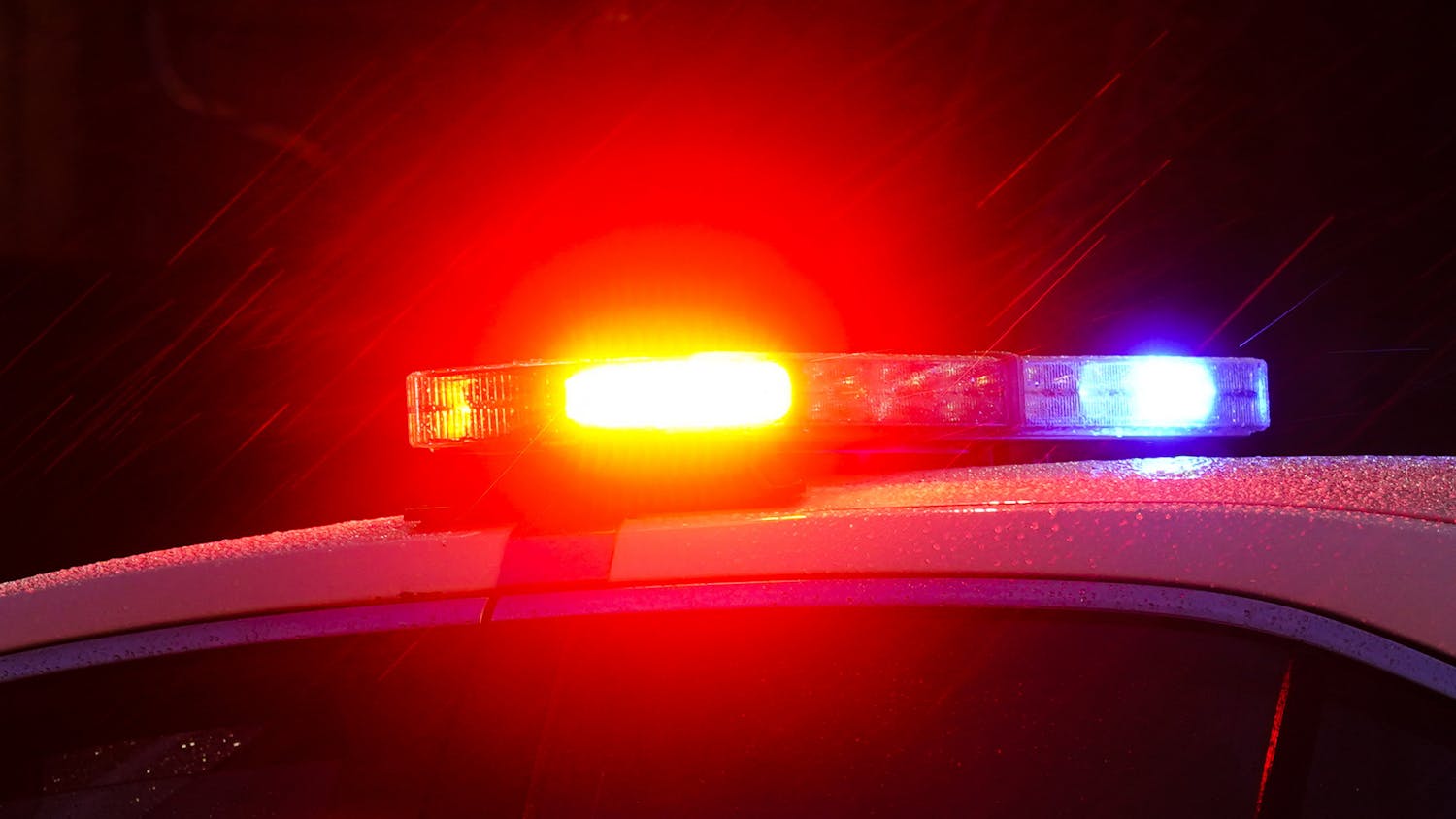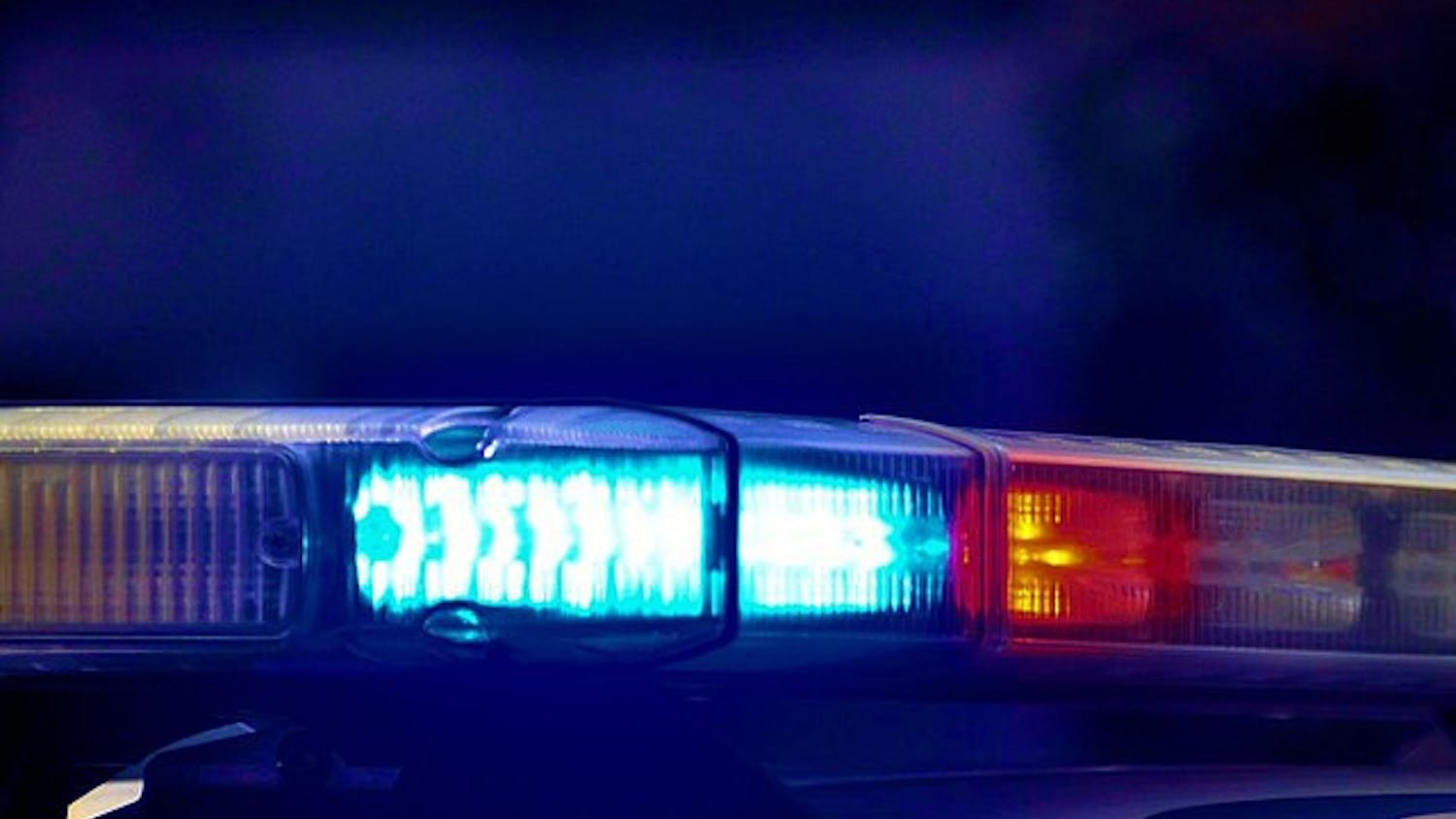Brianna DuPree dreams of shadows.
They linger in the corners of her room, slipping through the doorway. They’re wisps of darkness morphing into a shadowy face of an attacker, a face she still can’t remember from a night almost two months ago.
It’s a nightmare the 21-year-old can’t hide from, even when she forced herself to stay awake until dawn.
“If I had less time to sleep, I had less time to dream,” the UF public relations junior said. “And even if I did dream, I would have less time to remember.”
But in the morning, the shadows are gone — brushed away by a wagging tail and dog slobber on her face.
Healing after an assault can be conversation, art or therapy. For DuPree, it’s waking up to Dakota, a 7-year-old white Coton de Tuléar.
“My dog, he treats me the same before it happened, treats me the same after it happened,” she said. “He just makes me feel like things are okay.”
For survivors of sexual assault like DuPree, the details of the past don’t matter. Only today and tomorrow matter, chasing survival and success in the wake of medicines, nightmares and doubt.
“I’m not a victim,” she said. “I’m an overcomer.”
• • •

“He just makes me feel like things are okay.”
It’s not the room that triggers DuPree. It’s the darkness.
The bedroom door can’t be open at night. It will let the shadows in, and with them come the fear, the nightmares and the memories.
But since the attack, she’s been able to sleep at her friend’s house in the room where it happened — in the same bed, in the same sheets. She even plans to move into an apartment in the same complex because she feels safer with friends.
It scares her sometimes: the ease with which she can revisit the place where it happened. Is it normal? Is something wrong with her? Alone, she once sat in the room, struggling to feel and trying to understand.
“It makes me feel like something’s wrong with me, or that I’m weird,” DuPree said.
Yet the anticipation of a possible trigger could manifest more trauma.
“There’s a potential you could incite triggers where they don’t exist by suggesting them,” said Annie Carper, a victim advocate with University Police. “They’re very much handled in the moment or in the aftermath because they’re so spontaneous.”
The definition of a trigger is ambiguous; it varies based on survivor and experience. But Carper best describes it as something that unexpectedly causes feelings that thrusts survivors back into their experience of victimization during the assault.
There’s very little time for preparation. Often, there’s no clear explanation. The emotions are built upon reactions to the attack and previous experiences.
“Someone’s victimization doesn’t occur in a vacuum,” Carper said. “Everyone has a story, has life experiences that lead up to sexual victimization.”
Each person reacts and copes differently, and often, Carper said, survivors find new hobbies and interests as an outlet for their emotions.
For Nazmi Ahmed, it was travel.
Hours after her attack in 2015, she packed for Australia.
She had been planning the trip for months, but now she would be bringing more than just physical baggage onto the plane.
Guilt. Disgust. Shame. Doubt.
She blamed herself for what had happened.
But studying abroad and visiting family forced the UF sustainability studies senior to push away the emotions in favor of the experience.
“Just going to Australia made me put it on the side, you know?” Ahmed, now 22, said. “It’s like, I need to focus on more important things right now.”
Forty days later, she was back in Gainesville, facing the room where it happened.
She slept on the couch for a week. A friend from work came to help change the sheets on her bed. And, months later, travel is still an escape, with tickets booked for Connecticut, Canada and Belize after her graduation in May.
It keeps her away, she said, from the house, the bed and the people who ignored her pain.
“I had to put this issue aside because there were more issues at hand that I had to focus on — social justice issues, issues I study,” she said. “When I have such high ambitions of saving the world, it’s hard to focus on these mad wicked problems when my own self-health is in jeopardy.”
• • •

“I don’t know where I found that strength, or maybe I’ve always had it.”
For some, there is empowerment through art.
That’s why, down a staircase and in a quiet hallway at the Samuel P. Harn Museum of Art, Ashley Flattery helped set up an exhibit.
The “Survivors of Violence” art exhibit, which closed Thursday night, was important to her in part, she said, because it offered the Gainesville community a different forum to talk about the taboo. But more importantly, it was a medium of healing.
“It allows survivors to reflect where they are in their healing process,” said Flattery, a victim advocate counselor who works with the Alachua County Victims Services and Rape Crisis Center. “It lets them really tell their own story and narrate that without anyone else trying to control that.”
Most of the works were paint on canvas, hung carefully on a wooden wall. Some were splashes of abstract color, swirled together on a black frame. Others were more distinct — words, faces and figures with heads buried in hands.
All of it, Flattery said, was an expression of where each artist was in his or her healing process.
“When we do art, it challenges us to think and express in new ways, and it helps our brain put new meaning into what’s happened,” she said, adding that she often encourages survivors to look into exploring art.
“It helps them express themselves essentially in a way that words can’t touch.”
For Ahmed, that expression is dance.
Even before last May, the stage gave her solace and strength.
“It makes you forget about it,” Ahmed said. “Once I step onto that dance floor, nothing can touch me. Nothing.”
For the second time, she choreographed for Entropy, the only all-female performance group to dance at the Pakistani Student Association’s 20th annual cultural show. It became more than teaching a Bollywood hip-hop fusion piece — it became a sisterhood in which she taught her craft and shared her story with 23 women.
And on April 2, Ahmed led them across the stage, pink sashes pinned across their chests.
“It was a big distraction for me, and it was perfect,” she said. “I need distractions right now, but this is my passion. It makes me feel the most human.”
For similar reasons, DuPree found herself on a different stage during the Black Student Union pageant, performing a cultural dance with a friend.
“It gives me this weird adrenaline rush,” she said. “It was just me and the moves.”
But even as the two women embraced their empowerment on stage, a painful reminder still crept in.
For DuPree, that reminder sat in the front row and watched her perform. And for Ahmed, he stood front and center, making eye contact before she looked away.
Their presence sparked betrayal at the hands of their friends — friends who welcomed the men, despite knowing what Ahmed and DuPree had suffered at their hands.
But most of all, it fueled anger.
“People don’t do anything,” Ahmed said. “This isn’t a breakup. It’s a crime.”
The two men are free, nonchalant and unapologetic.
And the two women are cornered, wounded and afraid.
“It just frustrates me because I feel like his life is the same,” DuPree said. “And mine’s not.”
• • •
More than anything, recovery is marked by conversation — or a lack thereof.
Within days of her attack, Ahmed confided in friends and an ex-boyfriend.
But when her parents called and asked about her, she smiled and said she was fine.
Fear silenced her story — fear of a reaction she assumed would condemn and blame.
“You have to lie. You have to lie your ass off,” Ahmed said. “That’s intense.”
Deciding to share the story of survival is part of recovery, Carper said. It’s up to the individual to determine if and when he or she is comfortable speaking about what happened.
“It’s not just a narrative to them that they can share — it forces them in many ways to relive that experience,” she said. “Because that requires so much vulnerability and a certain amount of strength to share that, each individual has to decide when they’re ready, if ever, to share their story with other people.”
But in the moments after a story is shared, one response is encouraged more than any other.
“You believe them,” Carper said. “Believe what they are saying to you, and be with them.”
For DuPree, sharing her story has begun a conversation within her family. For the first time, her mother opened up about an equally emotional experience to both her daughter and her own mother. Apologies were made. Relationships were repaired.
“It blew my mind away,” she said. “A lot of people end up coming to me and sharing their stories, and it made me feel good that they’re finally getting that off their chest and talking to someone who kind of understands.”
On St. Patrick’s Day, Ahmed was ready to share.
She called her father. Then she told her mother.
In sharing her story, the memories of those conversations — her father’s unexpected empathy, her mother’s initial condemnation and both parents’ eventual understanding — are what bring the tears.
Since that conversation, the story has flowed more easily than ever before in therapy sessions, in private conversations and in public discussions of sexual assault. Each conversation, she said, is a step closer to acceptance of this reality.
“I’m an open book,” Ahmed said. “Life’s too short to be a secret.”
• • •

“I’m not a victim, I’m an overcomer.”
Recovery is day by day, moment by moment.
Sometimes, DuPree can’t get out of bed. A bulletin board covered with papers and assignments will be a painful reminder of the work she missed and the classes she dropped, inducing panic attacks in the middle of class.
“It’s not just that day or that week,” DuPree said. “Every day is a living hell.”
For Ahmed, it’s frozen limbs at 3 a.m. as she reads graphic accounts of rape in the papers she grades for a UF women’s studies class. Or it’s crippling fury, hit with the realization that she’s not in a single photograph from the dance she choreographed.
But both women move forward.
“Having the strength to go to counseling, having the strength to get a f-----g Tinder, having the strength to get out and experience new things and take control of situations — that, I don’t know where I found that strength,” Ahmed said. “Or maybe I’ve always had it.”
The commitment of classes will bring DuPree back in the Fall, still focused on finding her niche in the public relations field. Ahmed will return for graduate school, building upon her self-described addiction to helping humanity.
But in addition to school, both women are determined to keep sharing their stories, for themselves and for those who can’t.
“I hate that this happened to me,” DuPree said. “But maybe it happened so that I can help.”
She said she wants to be a voice for the friends and the strangers who haven’t been able to come forward. And Ahmed shares that sentiment, embracing the newfound strength she has found.
“I want to keep smiling for people,” Ahmed said. “I want to keep smiling for myself.”
@escochrane
ecochrane@alligator.org






